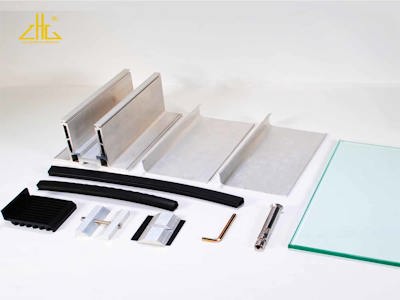Адрес:Unit 1510, Floor 5, Building 1, Guangfo Zhicheng, No. 85 Lingnan Road, Dali Town, Nanhai District, Foshan, Guangdong, China
Телефон:1388xx888xx
Телефон:1388xx888xx

В современном мире архитектура постоянно эволюционирует, и стеклянные фасады стали символом инноваций, элегантности и прогресса. Они не только преображают городские пейзажи, но и предлагают практические преимущества, такие как энергоэффективность, устойчивость и умные технологии. В этой статье мы погрузимся в мир стеклянных фасадов будущего, исследуя ключевые тренды, технологии и примеры, которые определяют архитектуру завтрашнего дня.
Стеклянные фасады давно перестали быть просто эстетическим элементом. Сегодня они играют crucial role в создании комфортных, экологичных и интеллектуальных зданий. От небоскребов в Дубае до офисных центров в Москве, стекло становится основным материалом для фасадов, сочетая в себе прочность, прозрачность и инновации. В будущем эти конструкции будут еще более advanced, интегрируя IoT, renewable energy и адаптивные системы.
История стеклянных фасадов начинается с простых оконных конструкций, но за последние десятилетия они претерпели radical changes. В 20 веке, с развитием steel and glass architecture, такие icons как Баухаус и Mies van der Rohe популяризовали использование стекла. Сегодня, благодаря nanotechnology и computer-aided design, фасады могут dynamically respond to environmental conditions, making buildings smarter and more efficient.
Умное стекло, такое как electrochromic или photochromic glass, позволяет изменять прозрачность фасада в зависимости от освещения или температуры. Это не только enhances privacy but also reduces energy consumption by optimizing natural light and heat. Например, технологии like SageGlass автоматически then adjust tint, saving up to 20% on cooling costs.
Кроме того, интеграция с IoT enables real-time monitoring and control. Датчики can detect weather changes and adjust the facade accordingly, creating a responsive building envelope that minimizes energy waste.
Современные стеклянные фасады designed to be highly energy-efficient. Low-emissivity (Low-E) coatings reflect infrared light, keeping buildings warm in winter and cool in summer. Triple-glazed units with argon gas fill provide superior insulation, reducing HVAC loads by up to 30%.
Устойчивость также key factor. Recycled glass and sustainable production methods minimize environmental impact. Some facades even incorporate photovoltaic cells, turning the building skin into a power generator. Projects like the Edge in Amsterdam showcase how glass facades can achieve net-zero energy status.
Advancements in materials science have led to stronger, lighter glass composites. Laminated glass with interlayers of polyvinyl butyral (PVB) offers enhanced safety and sound insulation. Curved and bent glass allow for more creative designs, enabling architects to create flowing, organic forms that were once impossible.
Кроме того, integration with other materials like carbon fiber or nanomaterials increases durability while reducing weight. This opens up possibilities for larger spans and more ambitious architectural statements.
Биомимикрия в архитектуре involves designing facades that mimic natural systems. For example, some glass facades use patterns inspired by leaf venation to optimize light diffusion and thermal regulation. This not only improves efficiency but also creates a harmonious blend with the environment.
Такие подходы often involve self-cleaning coatings based on lotus effect, where water beads up and carries away dirt, reducing maintenance costs and enhancing longevity.
Этот iconic skyscraper features a high-performance glass facade that withstands extreme heat and wind. The glass is coated with a reflective layer to reduce solar gain, while the design incorporates passive cooling techniques. It serves as a benchmark for future tall buildings.
Стеклянный фасад The Shard uses double-skin technology with a ventilated cavity that improves insulation and reduces energy use. The angled glass panels also help to deflect wind and minimize structural stress.
В России, Башня Федерация в Москве employs advanced glass with high thermal performance. The facade integrates with the building's smart systems to optimize energy consumption, showcasing local innovations in sustainable architecture.
Будущее стеклянных фасадов looks even more exciting. We can expect:
Если вы планируете проект с стеклянным фасадом, consider the following:
Стеклянные фасады будущего – это не просто красивые оболочки, а intelligent, sustainable systems that redefine how we interact with buildings. Они embody the fusion of art and science, offering solutions to global challenges like climate change and urbanization. By embracing innovations, we can create structures that are not only visually stunning but also resilient and efficient. The future of architecture is clear, bright, and undoubtedly glass.
Призыв к действию: Готовы воплотить инновации в вашем следующем проекте? Свяжитесь с нами для консультации по современным стеклянным фасадам и узнайте, как мы можем помочь создать sustainable and smart building that stands the test of time.
Телефон:1388xx888xx
Мобильные телефоны:1388xx888xx
Контактные лица:Shawn
Адрес:Unit 1510, Floor 5, Building 1, Guangfo Zhicheng, No. 85 Lingnan Road, Dali Town, Nanhai District, Foshan, Guangdong, China